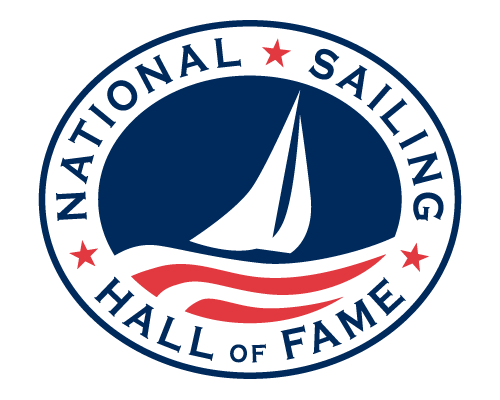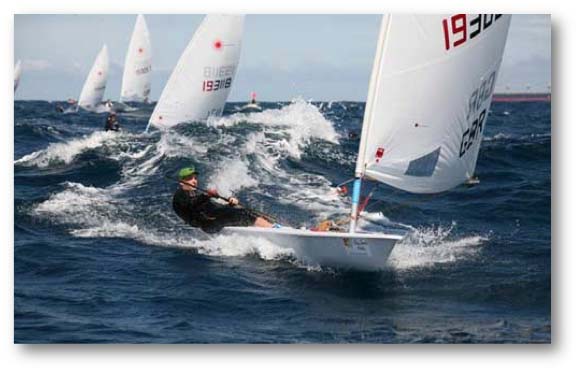Topic: How a Sailboat Works – Hull Speed & Buoyancy
Teacher Resources:
Printable PDF Version of this Lesson Plan
Downloadable PPT of Lesson (3.9mb)
Primary Goal : After this lesson, students should be able to determine the proper hull designs necessary to compliment the rig they chose for the sailboat design. They will also understand the equations to make sure their boat is built within the necessary parameters to ensure seaworthiness.
Lesson Objectives :
- Students will continue to learn the various hull designs and understand how a sailboat’s speed is affected by her hull
- Students will learn how to calculate hull speed
- Although most students have learned about the basics of why an object floats, this lesson should summarize buoyancy and Archimedes principle
Lesson Outline :
- A sailboat’s hull is important for the many reasons we discussed during last class.
- The one subject we didn’t cover is Speed
- Modes of Sailing
- Displacement Sailing
- As the sailboat moves through the water, she is constantly displacing a new patch of water
- This generates waves behind the boat and will eventually cause the speed of the boat to max out
- Because of this, when designing a displacement sailboat it is important to design a hull that easily cuts through the water as smoothly as possible
- Planing Sailing
- As the sailboat speed increases, the pressure which causes the bow wave causes the boat’s bow to completely rise up out of the water and the hull moves over the water rather than through it
- These boats can go much faster because of minimal drag
- However, these boats require a great deal of power to get on a plane and thus can be very difficult to drive for novice sailors
- Forced Mode
- This is not covered but worth mentioning in more advanced classes
- However, this is a good intro into hull speed
- Displacement Sailing
- Hull Speed
- Used to determine the theoretical maximum speed of a displacement sailboat
- As a displacement sailboat’s hull pushes through the water, she makes waves at her bow and stern
- When hull speed is reached, the boat will appear trapped between the waves she is generating
- The length of the wave, and thus hull speed, is based purely on the boat’s length
- Discuss how this calculation only applies to displacement hulls and not planing sailboats
- Used to determine the theoretical maximum speed of a displacement sailboat
- How a Sailboat Floats: Buoyancy
- A boat will float so long as her total volume weighs less than the density of the water it displaces
- Archimedes Principle – The upward buoyant force on a sailboat is equal to the weight of the fluid that body displaces
- A sailboat will float as long as the gravitational weight of the boat is less than the upward buoyancy force
- Boats are designed with the specific purpose of displacing enough water to float
- How do you think men and women design large container ships to float?
- This is a great opportunity to discuss density
Supplemental Resources :
YouTube video by LearnBiologically on Archimedes Principle: How do Ships Float?
DSN Animation Video: What is Stability?
US NAVY STEM for the Classroom: Buoyancy & Volume Lesson
Exercises/Activities :
This is a great class to conduct an experiment in buoyancy and show how different objects float. This is a good example of an experiement: Education.com Archimedes Principle
![]()




